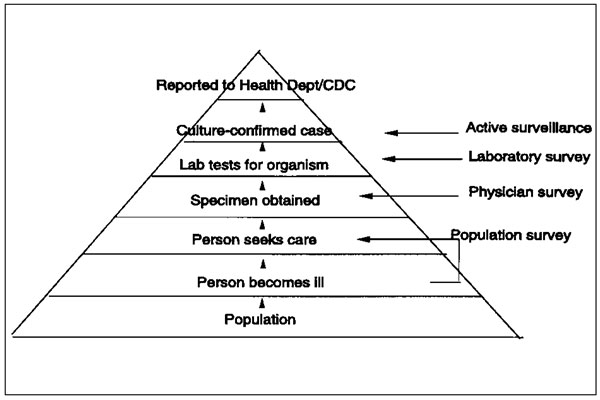Foodborne Diseases Active Surveillance Network (FoodNet)
FoodNet Working Group
*Frederick Angulo, David Swerdlow, Robert Tauxe, Patricia Griffin, Drew Voetsch, Thomas Boyce, Sudha Reddy, Mary Evans, Sam Yang (CDC); Duc Vugia, Ben Werner, Kevin Reilly (California Department of Health Services); Sue Shallow, Gretchen Rothrock, Pam Daily, Felicia Chi (California EIP); Paul Blake, Jane Koehler (Georgia Department of Human Resources); Monica Farley, Wendy Baughman, Molly Bardsley, Suzannne Segler, Shama Desai (Georgia EIP); James Hadler, Pat Mshar (Connecticut Department of Public Health); Ruthanne Marcus, Terry Fiorentino (Connecticut EIP); Michael Osterholm, Craig Hedberg, Jeff Bender, Julie Hogan, Valerie Deneen, Heidi Kassenborg (Minnesota Department of Health); Paul Cieslak, John Townes, Beletshachew Shiferaw, Maureen Cassidy, Theresa McGivern, Regina Stanton (Oregon Health Division); Diane Dwyer, Peggy Pass (Maryland Department of Health and Mental Hygiene); and Dale Morse, Julia Kiehlbauch, Hwa-Gan Chang, Cathy Stone (New York Department of Health); I.Kaye Wachsmuth, Jill Hollingsworth, Peggy Nunnery, Art Baker, Phyllis Sparling (USDA-FSIS); Ken Fauchi, Bing Garthright, Sean Altekruse (FDA-CFSAN).
Main Article
Figure

Figure. The prevalence of illness pyramid. Passive surveillance data represent only the tip of the iceberg. For a bacterial infection to be included in the passive surveillance system, it must pass through the following steps: a person becomes ill with a diarrheal disease, the patient must go to a doctor, the doctor must order a bacterial stool culture, the assigned microbiology laboratory must culture for this organism and report the infection to the state health department, and the state health department in turn must report the infection to CDC. This passive surveillance system is the means by which the number of cases of foodborne illness is currently determined at CDC; if any step does not occur, foodborne illness is not reported. FoodNet is designed to collect information along each step of this pyramid.
Main Article
Page created: December 22, 2010
Page updated: December 22, 2010
Page reviewed: December 22, 2010
The conclusions, findings, and opinions expressed by authors contributing to this journal do not necessarily reflect the official position of the U.S. Department of Health and Human Services, the Public Health Service, the Centers for Disease Control and Prevention, or the authors' affiliated institutions. Use of trade names is for identification only and does not imply endorsement by any of the groups named above.
